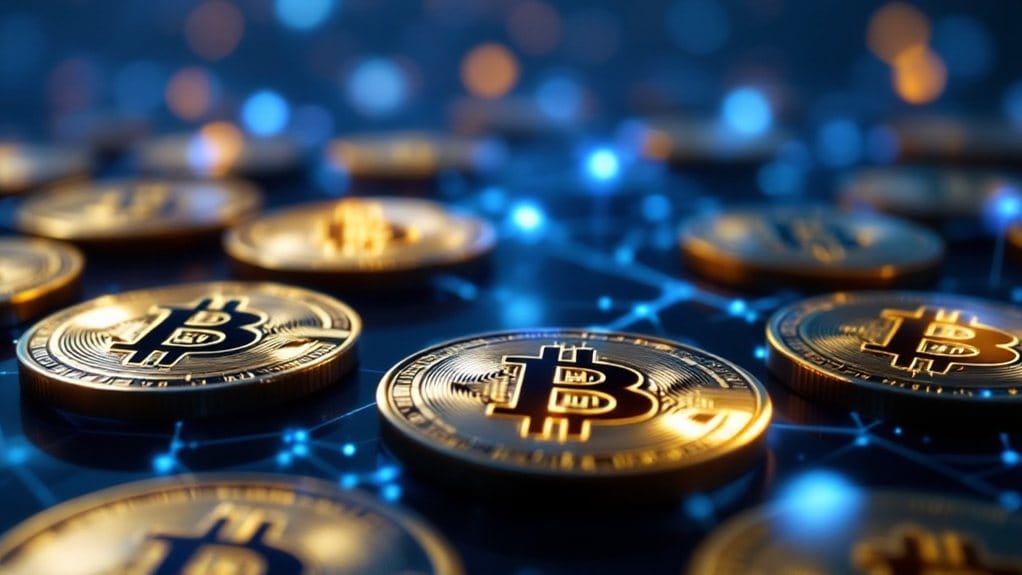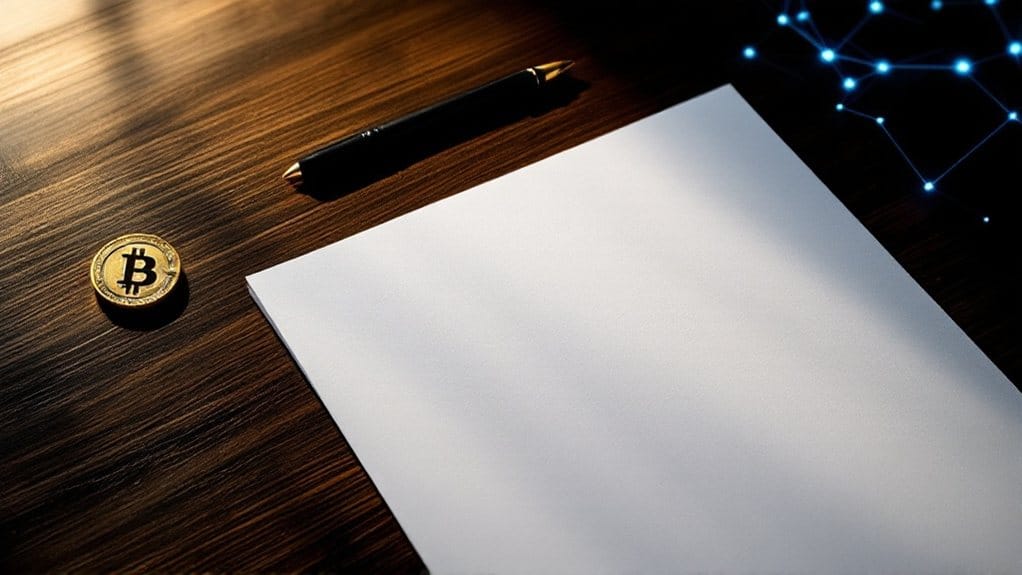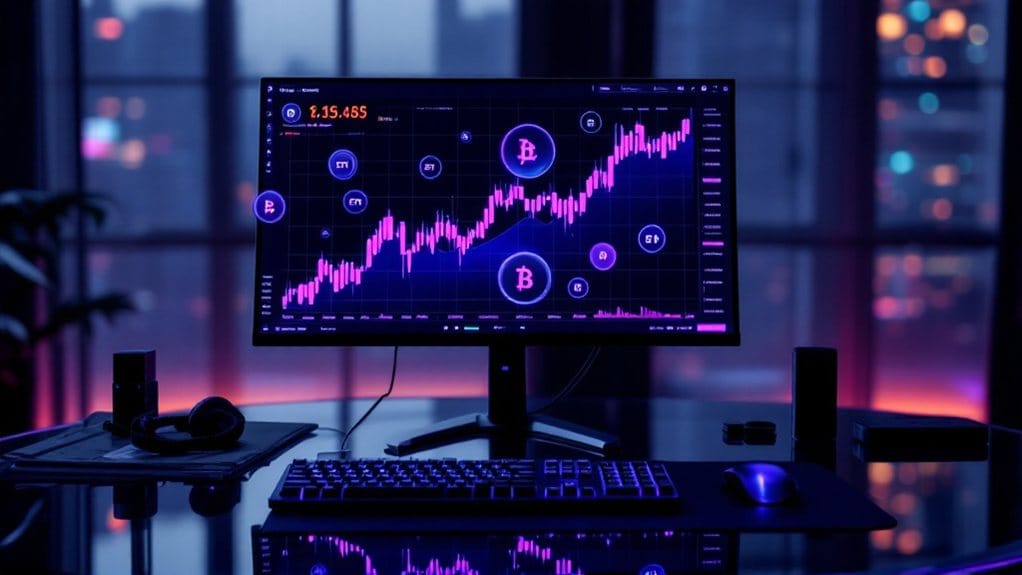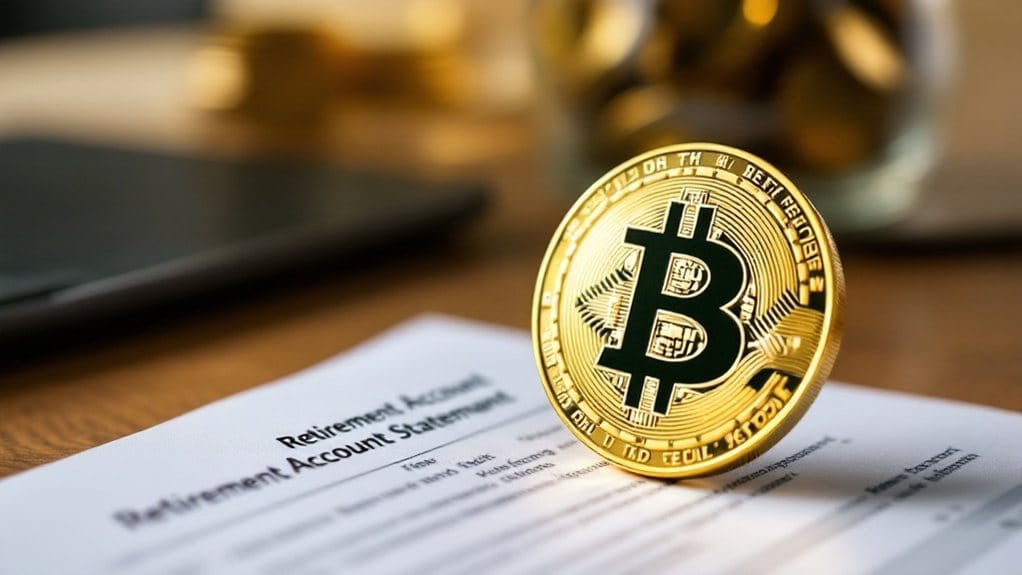BRC-20 tokens are experimental fungible tokens created on Bitcoin’s blockchain through the Ordinals protocol, introduced in March 2023 by analyst Domo. This innovative standard enables token creation and transfers without smart contracts by utilizing JSON files inscribed onto satoshis, leveraging Bitcoin’s security infrastructure. While facing challenges like network congestion and limited adoption, BRC-20 tokens expand Bitcoin’s utility beyond value storage into decentralized finance, gaming assets, and fundraising applications. Further exploration reveals the technology’s transformative potential for blockchain innovation.
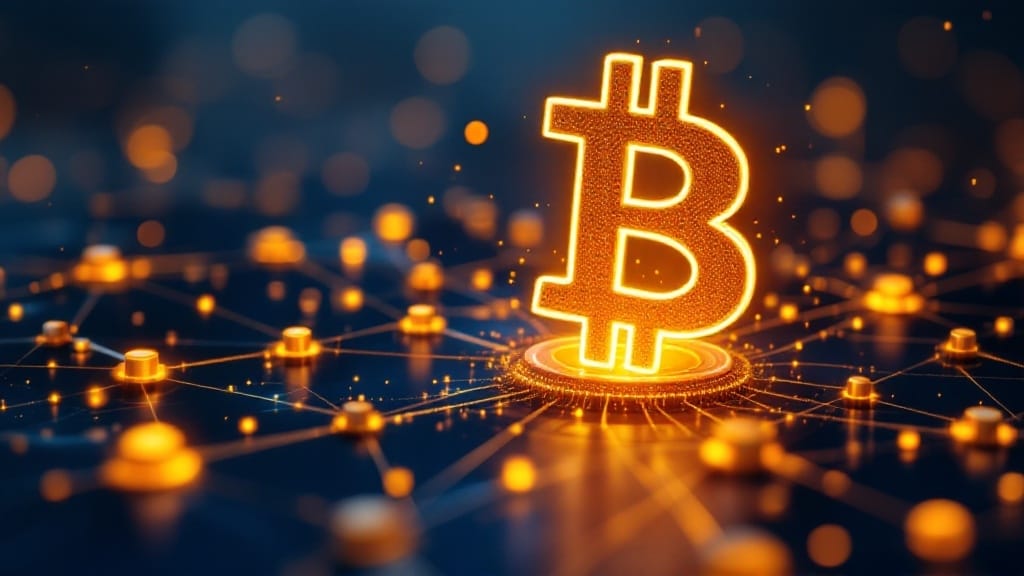
Innovation in blockchain technology has given rise to BRC-20 tokens, a groundbreaking experimental standard that brings fungible token functionality to the Bitcoin network. Introduced by the pseudonymous blockchain analyst Domo in March 2023, these tokens utilize the Ordinals protocol to inscribe data onto individual satoshis, creating a simplified mechanism for token creation and transfer without the complexity of smart contracts. Smart contract absence makes these tokens more straightforward to develop and trade.
The fundamental architecture of BRC-20 tokens relies on JSON files inscribed onto satoshis, operating within Bitcoin’s decentralized infrastructure while benefiting from its robust security features. This approach enables the creation of identical, fungible tokens that can be seamlessly traded and exchanged, similar to Bitcoin itself, while maintaining the network’s inherent security advantages through its established consensus mechanism. The system leverages Bitcoin’s robust security to ensure the integrity of token transactions.
BRC-20 tokens leverage Bitcoin’s secure infrastructure through JSON inscriptions, creating fungible assets that mirror Bitcoin’s tradability and consensus strength.
BRC-20 tokens have emerged as catalysts for expanding Bitcoin’s capabilities beyond mere value storage, enabling diverse applications including decentralized finance protocols, blockchain gaming assets, and crowdfunding initiatives. Similar to traditional ICO fundraising, these tokens can provide startups with innovative ways to raise capital within the Bitcoin ecosystem. The standard’s simplicity has made token creation more accessible to developers, fostering innovation within the Bitcoin ecosystem despite its limitations in smart contract functionality.
However, the nascent technology faces several significant challenges that warrant attention. Network congestion from BRC-20 and other ordinal-based projects can lead to increased transaction fees, while interoperability issues with other blockchain systems and wallets present ongoing obstacles.
The experimental nature of the standard, combined with limited user-friendly tools and services, currently constrains its widespread adoption.
The future development of BRC-20 tokens holds promise, as more projects investigate their potential applications and contribute to the ecosystem’s growth. While regulatory clarity and scalability concerns remain pressing issues, the standard continues to evolve, potentially reshaping how tokens function within the Bitcoin network.
The ongoing development of supporting infrastructure and tools suggests a trajectory toward increased utility and adoption, though careful consideration of technical limitations and network impacts remains critical for sustainable growth.
FAQs
How Do I Safely Store BRC-20 Tokens After Purchasing Them?
To store BRC-20 tokens securely, users should employ ordinal-compatible wallets like Leather or XVerse, which support proper token management and balance tracking.
Hardware wallets, such as Ledger, provide additional security by storing private keys offline.
Regular software updates, transaction monitoring, and implementing alert systems for large transfers are critical safeguards.
Users must verify wallet compatibility and maintain secure backup procedures for private keys.
Can BRC-20 Tokens Be Converted Back to Regular Bitcoin?
BRC-20 tokens can be converted back to Bitcoin through several methods.
The primary approach involves using cryptocurrency exchanges that support BRC-20/BTC trading pairs, where tokens can be directly sold for Bitcoin.
Alternatively, users can execute a two-step conversion by initially trading BRC-20 tokens for stablecoins, then exchanging those stablecoins for Bitcoin.
Major platforms like Binance Futures support the 1000SATS/BTC trading pair, facilitating this conversion process.
What Happens to BRC-20 Tokens During a Bitcoin Network Fork?
During a Bitcoin network fork, BRC-20 tokens typically mirror onto both chains, as they exist as inscriptions within the blockchain’s transaction data.
The tokens’ functionality depends on whether the new chain maintains Ordinal protocol compatibility and community support.
Network participants may need to wait for exchanges and wallet providers to determine which chain they’ll recognize, potentially affecting token values and tradability on respective chains.
Are There Any Tax Implications Specific to Trading BRC-20 Tokens?
Trading BRC-20 tokens triggers taxable events similar to other cryptocurrencies, requiring careful documentation of each transaction’s fair market value.
Traders must report capital gains or losses based on holding periods, with transactions held over one year qualifying for long-term rates.
Furthermore, token-to-token swaps and conversions to fiat currency are taxable events that need reporting on appropriate tax forms.
Which Cryptocurrency Exchanges Currently Support BRC-20 Token Trading?
Several major cryptocurrency exchanges support BRC-20 token trading, with Binance leading as the primary platform offering substantial liquidity and diverse trading pairs.
KuCoin and Gate.io have also integrated BRC-20 token support, providing competitive trading options and fees.
For decentralized alternatives, platforms like ALEX and Unisat offer direct BRC-20 trading capabilities, while Ordinals Wallet enables native trading within the Bitcoin Ordinals ecosystem.
